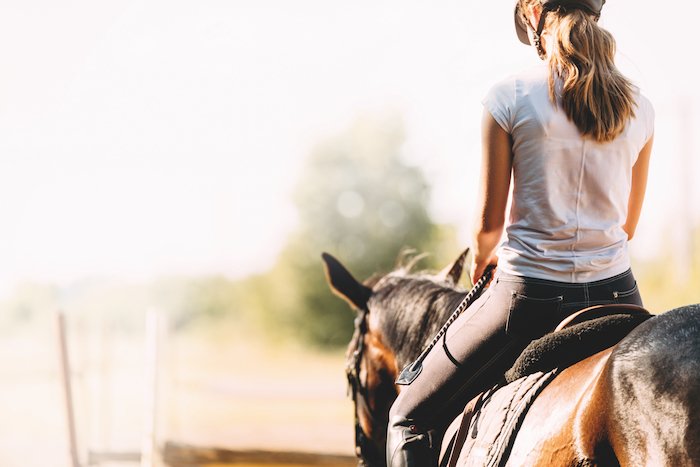
[dropcap]A [/dropcap]‘hot seat’ is a pushy seat where the rider sits ‘on top’ of the horse, instead of ‘around’ the horse and ‘in’ the saddle.
The cause of this problem could be a number of things and most often it can be traced back to the centre of the body: the buttocks, lower abdomen, lower back, pelvis and seat bones. This centre of the body forms the basis of the independent seat. When riders forcibly try to sit still, they create tension in the body that blocks the ability to follow the movement of the horse. Keep in mind that horse riding is a dynamic movement and not static. It might sound counter-intuitive, but following the motion of the horse makes you sit still, while trying to sit still makes you more bouncy.
The following exercise will help you to find out if you tend to have a hot seat. Focus on one point in the arena and keep following this point by turning your head, and see what happens with your body. If you are too tight and static in your body, this exercise will be difficult for you and your body will change position or you will not be able to follow the point for a long time.
By influencing your centre, you will be able to improve your seat. Firstly, make sure that the positions of your seat bones are correct. Imagine that your seat bones are two sticks that need to face down. Secondly, check if your buttocks and upper leg muscles are relaxed, otherwise you sit ‘on top’ of your horse.
One final tip for trainers who see riders with a hot seat is to try to provide feedback in a dynamic way, not a static way. For example, do not say “Keep your head up”; rather say: “Let your head balance on your body.” Don’t say: “Keep your legs still’; rather say: “Let your legs become longer each stride and drop down from the knee.”

